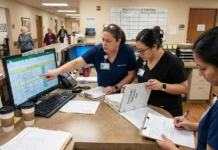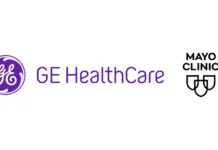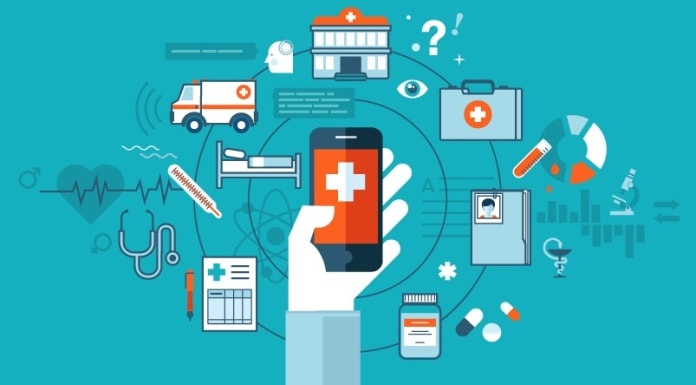Telehealth is now being mainstreamed by PCTs across the country in order to prevent avoidable hospital admissions to hospital and monitor long-term needs within the home. The increasingly widespread use of telehealth solutions is also transforming the ability to manage chronic disease and long-term conditions in the community and shift the balance away from a reliance on hospitals and long term institutional care.
Over 17.5 million people in the UK live with a long-term condition, which places a significant strain on health and social care resources. It is estimated that 80% of GP consultations relate to a long-term condition, and that 60% of hospital bed usage is by people with a long-term condition.
The treatment and care of those with long-term conditions also accounts for 69% of the Primary and Acute care budget in England, placing a clear economic burden on the NHS. Indeed, it is estimated that the UK economy stands to lose £16billion over the next 10 years through premature deaths due to heart disease, stroke and diabetes.
As a result, momentum for telehealth has been growing over the last few years, as those with health and social care responsibilities look for innovative ways to manage long-term conditions effectively and help reduce some of the pressure on the NHS.
Monitoring Long-Term Conditions with Telehealth
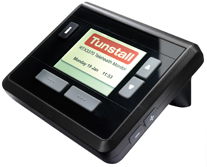
The UK Government is making committed steps towards more person-centred and flexible care delivery. Its Our Health Our Care Our Say white paper, Lord Darzi’s NHS Next Stage Review and Putting People First agenda all place a clear emphasis on longer-term planning and on providing more preventative community-based care delivered at a local level that is tailored to meet the specific health and social care needs of the individual.
Telehealth supports the Darzi report’s call for greater provision of care closer to people’s homes, by supporting those living with single or multiple long-term conditions, including Chronic Heart Failure, COPD, diabetes and hypertension, helping them to continue living independently by providing more personalised, community-based care.
Telehealth is now being mainstreamed by PCTs across the country in order to prevent avoidable hospital admissions to hospital and monitor long-term needs within the home. The increasingly widespread use of telehealth solutions is also transforming the ability to manage chronic disease and long-term conditions in the community and shift the balance away from a reliance on hospitals and long term institutional care.
Telehealth: supporting effective, community-based care
Telehealth allows nursing staff to remotely manage patients, ensuring support can be provided at an early stage when needed, and at the same time enabling them to prioritise visits and manage their case loads more effectively, for best use of healthcare resources.
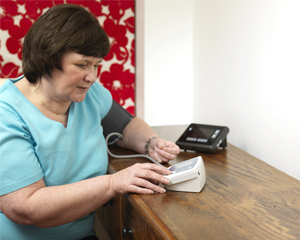
Patient data is transmitted to community nurses on a daily basis, enabling them to triage their ‘virtual ward’ against agreed vital signs criteria and apply an order of priority to the visitation schedule. This approach provides clinical staff with more accurate information about a patient’s condition, allowing them to focus their time accordingly so patients experiencing a critical change receive treatment as soon as it is required.
Being able to monitor and detect changes at an early stage also enables nursing staff to reduce the number of acute admissions to hospital and resulting dependency on secondary care, improving outcomes and ensuring best use of available resources.
A key additional benefit of telehealth is that it also educates patients to be more aware of their own symptoms and to proactively manage them which leads to an improved quality of life for patients and carers. It encourages patients to feel more in control of their condition, which is a key factor in helping to improve healthcare outcomes.
Measuring the benefits of telehealth: reducing admissions and ensuring effective use of resources
Sheffield PCT took the decision to deploy telehealth solutions from Tunstall, in order to tackle the issue of COPD in the community. During a recent pilot, home visits by community COPD nurses were reduced by an astonishing 80%, cutting travel costs and enabling healthcare staff to prioritise their workload, which ensured the most effective use of their time.
This innovative approach saw COPD-related hospital admissions dramatically decrease by 50%, saving the PCT £30,000 to £40,000 on a small number of patients and allowing them to purchase more monitors, to further expand the use of telehealth for the management of long-term conditions.
Meeting individual patient needs in Nottingham
With around 22,000 hospital admissions per year in Nottingham linked to long-term conditions – 40% of all hospital activity – mainstreaming telehealth has dramatically reduced hospital admissions and GP visits, lessening the burden on primary and acute care providers and ensuring NHS resources are used effectively.
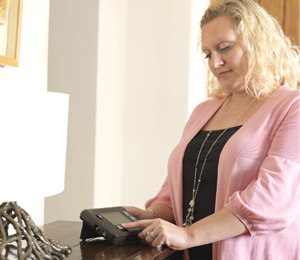
Nottingham PCT uses the telehealth technology from Tunstall to monitor around 800 people each year with long-term conditions such as COPD and congestive heart failure. This approach supports independent living, promotes patient self-management and reduces the need for repeat hospital admissions.
A key benefit of the telehealth solutions is that they can be tailored to meet the specific needs of the individual patient. As well as using the monitor to measure vital signs, the community matron can programme the monitor to ask the patient a set of medical questions specific to their condition; this helps clinicians further determine the status of their patient’s condition.
A healthy outlook for telehealth
Telehealth solutions are playing a pivotal role in supporting older people and those with long-term needs to live independently, by effectively managing their health and well-being. Primary Care Trusts mainstreaming telehealth have demonstrated telehealth delivers clear benefits to the patient and the PCT and also to carers and other secondary care sources.
As well as delivering significant reductions in hospital admissions, telehealth has also enabled Trusts to make financial savings. The use of telehealth in Sheffield has seen a 50% decrease in hospital admissions. It has been calculated that based on a cost of £2,000 per admission, saving 50 admissions a month, could potentially save the PCT £1,200,000 per year.
Sheffield and Nottingham PCTs have witnessed the benefits of telehealth in improving patient care and in helping to ensure best use of resources. Tunstall is working with these and many other Trusts across the country to further extend their use of telehealth to address other long-term conditions and continue to make it an integral part of their overall model of care.
www.tunstallhealth.com
01977 661234





